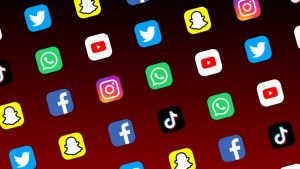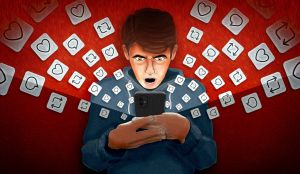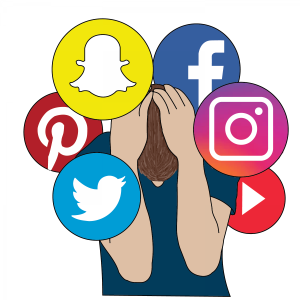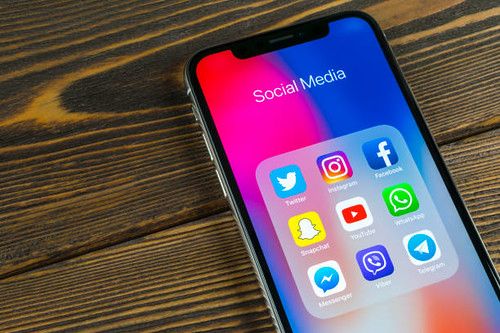
Since the early 2000s, many social media platforms have launched to help people connect. In today’s day and age, more than 3.6 billion people worldwide use at least one social media platform.
Social media has become great for people of different age groups to stay in contact. Whether it’s sharing a picture, reflecting on a comment or sending a message, it has a “dark side,” Dr. Nune Grigoryan, assistant communications professor, said.
“It’s good for collaborative opportunities,” Grigoryan said. “But it also has a lot of fake information and hurtful practices and behaviors, too.”
“Social media is a good thing, but I also see negative effects from it,” Evelyn Enrique, senior marketing major, said.
“I think it makes it easier and more reliable to communicate and contact people,” Enrique said. “But I think the negative aspect of it is a lot of kids are using it nowadays, so more younger kids are being more active on their phones and less interactive with people.”
Despite the positive effects social media has on communication, it most certainly brings negative effects to people’s health and insecurities. From the most popular platforms: Twitter, Facebook, Instagram, Snapchat and TikTok, each platform causes people to develop insecurities.
“I wouldn’t say they don’t intentionally target insecurity groups,” Grigoryan said. “I do know that platforms that belong to META, previously known as Facebook, have more history of hurting insecure people with more vulnerabilities.”
Grigoryan said within the last few years, platforms, such as Instagram, have largely influenced the mental health of young women and the way they view their body images, leading many of them to develop eating disorders.
“Nothing much was done to stop it and to bring a positive effect,” she said. “So, the more people are consuming this kind of information, which is hurting their mental health and contributing to eating disorders, they would get more content about it.”

Similar to Instagram, Snapchat has also been known for posting pictures and videos for people to view and comment on. Both Instagram and Snapchat have grown to “make young kids and teenagers feel insecure about themselves,” Enrique said.
“It gives them the fear of missing out all the time,” Enrique said. “So it can affect them to want to go out and feel down and insecure about themselves because maybe they’re not doing everything that they’re seeing their friends post about.”
Unlike Instagram and Snapchat, Twitter is a faster and more interactive platform for people to comment on each other. Although, most people do it in harsh manners.
“If you think about it, people who are on Twitter mostly are politically engaged,” Grigoryan said. “They have formed opinions that are not visual, so Twitter influences the realm more into spreading fake news, more likely than influencing mental health.”
However, similar to Facebook, consuming a lot of fake news on Twitter can still have a detrimental effect on mental health.
“You don’t take a break,” Grigoryan said. “Or you are only hearing certain types of information.”
According to recent research, TikTok, the newest platform that has gained global attention in the last few years, has created harsher insecurities and more negative body images for people, especially teenage girls, worldwide.
“I’ve noticed that a lot of younger kids use TikTok,” Enrique said.
The constant urge to video scroll has created related insecurities and harmful behaviors that Instagram and Snapchat have also created for younger kids.
“It gives them the urge to constantly post and do videos,” Enrique said.
With the consistency of social media harming people, a take of action towards preventing these damaging, yet deadly, uncertainties and mental health effects must be put into place.

“Users should be more careful in what kind of information they are consuming and how much they are consuming,” Grigoryan said. “But there is a responsibility on the end of the platform itself, as well. It’s a two-way straight.”
“Maybe there can be a class on how kids can be more aware of how to use social media,” Enrique said. “Also, maybe taking breaks at times and setting alarms on your phones to know when to get off the app or when to use it. Kind of just like making a routine – a healthy balance on how to use social media.”
Social media is great for most things like connecting and communicating with people but in reality, it has its ways of bringing people down and creating self-doubts and health issues. This is why people must learn to use it wisely, whether it’d be for health purposes or news collecting.
“I think we should take social media for what it is, which is just a communication tool,” Grigoryan said. “And not forget that there’s a social aspect to life, too.”



